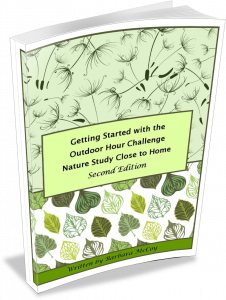Start thinking about observing your spring time cattails. We were horrified to discover that one of our cattail spots had been cut down and cleaned out! It is funny how you become attached to a place once you have learned about the plants, animals, and trees that live there. We are going to watch to see if the cattails come back.
Inside Preparation Work:
Read pages 500-502 in the Handbook of Nature Study if you have not done so before. It might also be beneficial to read it again this season and highlight the parts that contain information about the leaves of the cattail plant. We will be focusing this season on where the cattail grows and what the leaves look like as they grow up from the plant. Prepare yourself for this week’s outdoor time by reading #1, #2, #4, and #5 suggestions for study on page 502.
(In the free version of the Handbook of Nature Study, the cattail section starts on page 551. If you are using the free version from HomeschoolFreebies, you need to look in Plants and Trees, page 65)
Outdoor Hour Time:
Enjoy your outdoor time this week at your cattail spot. If you have been participating in the year-long cattail study since last autumn, you will know just where to look for cattails. Use the suggestions from the Handbook of Nature Study to talk a little about the habitat where your cattails are growing.
- How wide a strip of land do the cattails cover?
- Are they near a stream, brook, or pond?
- Observe the kind of soil where your cattails grow.
- How are the leaves arranged-growing opposite or alternating?
- Describe the leaves’ texture, color, shape.
- Have your child make as many observations as they can during your outdoor time of the cattail. (Keep it fun.)
Follow-Up Activity:
Make sure to allow some time after your outdoor hour to discuss any subjects that your child finds interesting. Encourage the completion of a nature journal entry recording your observation of your cattails. You can use the notebook page included in the Spring Series ebook or a blank page in your journal.
Make sure to encourage your child to sketch the cattail leaves. Also try to include a little of the habitat that your cattails are growing in during this season. Include in your sketch any insects, birds, or animals that you observed near your cattails during your outdoor time. Here is a link for more information on Broad Leaf Cattails.
- Here is a Spring Nature Walk Worksheet for you to use with your family. If you had trouble with this download last week, try again this week!
- Here is last year’s Spring Cattail Entry and a free Cattail Seasonal Notebook Page.

































